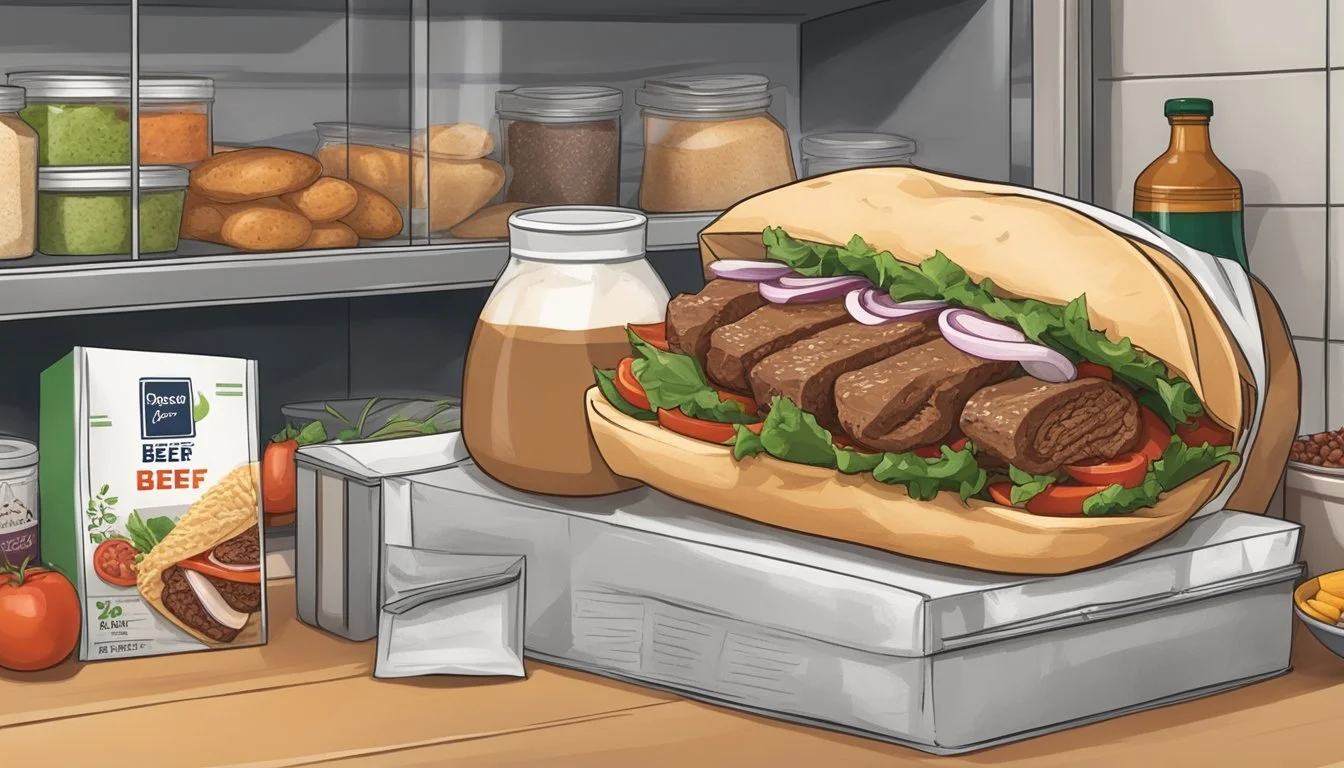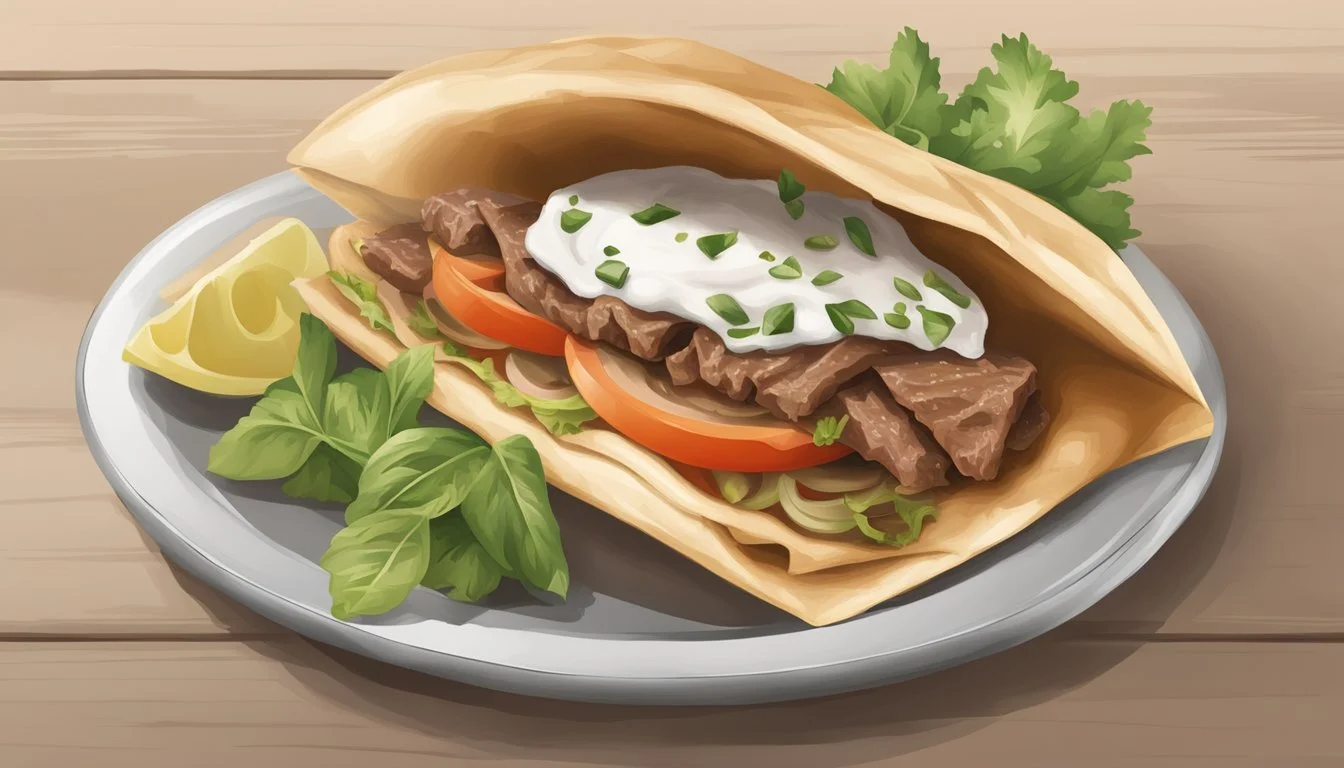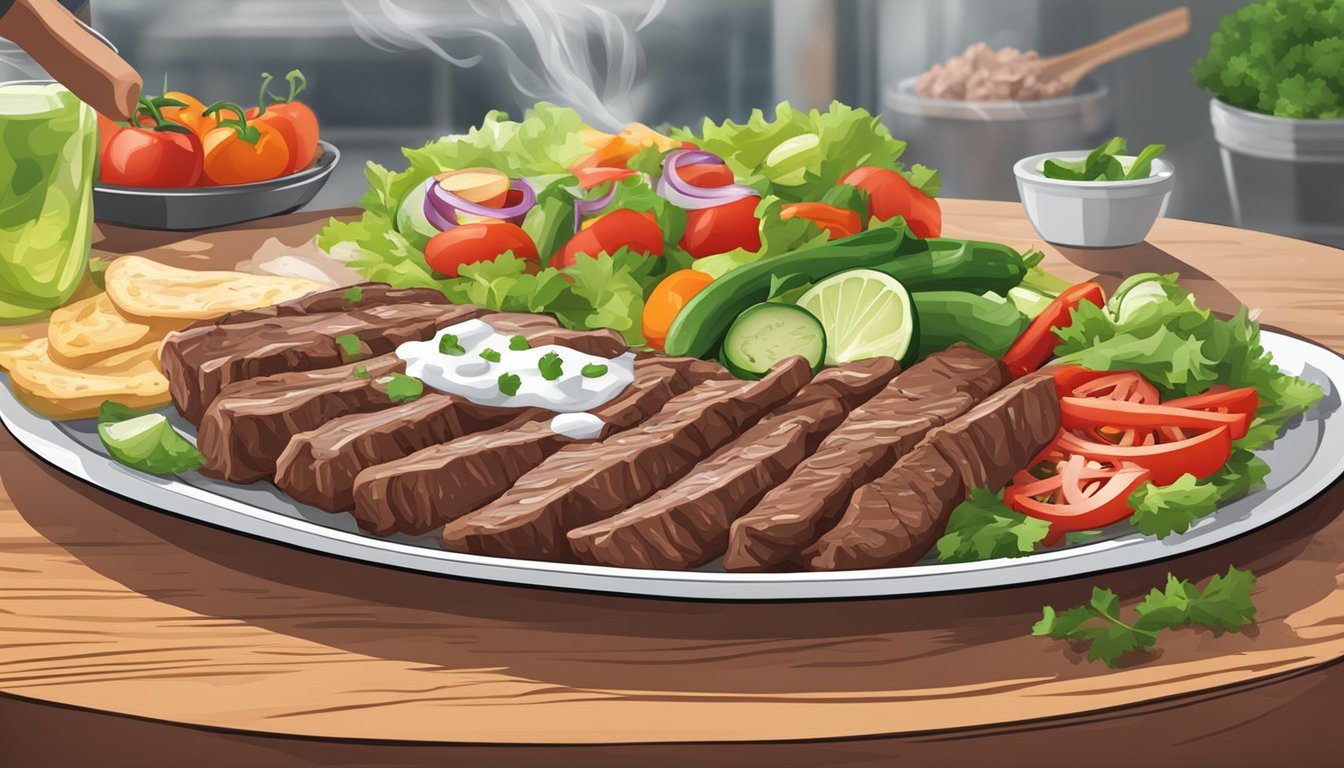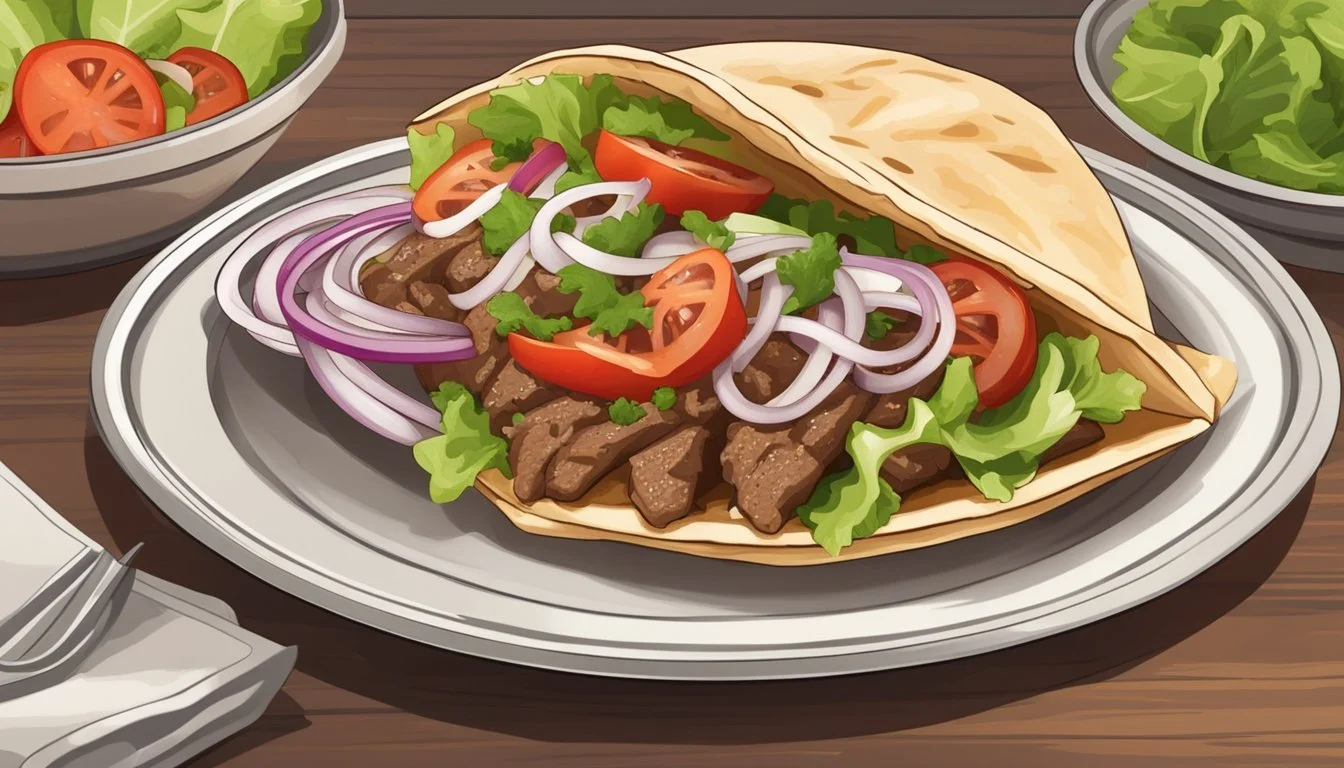How Long Does Beef Gyro Last?
A Guide to Proper Storage
Beef gyros are not only delicious but also a versatile dish that can be enjoyed for several days if stored correctly. Beef gyro meat can be stored in the refrigerator for up to 3-4 days when wrapped tightly in plastic wrap or aluminum foil, preserving its flavors and textures. Ensuring the proper storage of both the beef and any accompanying ingredients, such as pita bread and Tzatziki sauce, will help maintain the dish's freshness.
For longer storage, freezing is an effective option. Properly wrapped beef gyro meat can last up to 2-3 months in the freezer. When ready to enjoy, simply thaw the meat in the refrigerator and then reheat it in a skillet or oven until warmed through. This ensures the meat retains its original taste and texture, providing a quick and convenient meal option.
It's also important to consider the nutritional benefits of beef gyros. High in protein and seasoned with a variety of spices, beef gyros are a satisfying and nutritious choice. By following proper storage practices, the delicious flavors of this popular dish can be savored even after several days.
Understanding Gyros
Gyros are a popular Greek dish that combines flavorful meat with fresh vegetables, tangy sauces, and pita bread. It's essential to comprehend the history, components, and nutritional aspects of gyros to appreciate their culinary and cultural value.
History and Origins
Gyros originated in Greece, inspired by Middle Eastern shawarma and Turkish döner kebab. These dishes share the method of cooking meat on a vertical rotisserie. The word "gyro" itself means "turn" in Greek, referring to the rotation of the meat on the spit.
Introduced in the 1920s, gyros became increasingly popular and are now a staple street food. Traditionally made with pork or lamb, beef gyros have also gained popularity.
What Makes Up a Beef Gyro?
A beef gyro consists of several key components. Thinly sliced beef, seasoned with Greek spices, is the centerpiece. The beef is usually cooked on a vertical rotisserie. Pita bread is essential, providing a soft yet sturdy base.
Popular toppings include tzatziki sauce, a yogurt and cucumber mixture, tomatoes, onions, and lettuce. Feta cheese often adds a salty, tangy element. The ingredients work together to create a balanced and flavorful dish.
Health and Nutritional Aspects
Beef gyros offer a mix of nutrients. The beef provides protein and iron. However, depending on preparation, it can also be high in fat and sodium. Using lean cuts and moderate seasoning can make it healthier.
Fresh vegetables like tomatoes, onions, and lettuce add vitamins and fiber. Pita bread contributes carbohydrates and some proteins. Tzatziki sauce provides probiotics from yogurt. For a balanced diet, consider portion sizes and choose whole-grain pita if available.
Shelf Life of Beef Gyros
Beef gyros can last for different periods depending on how they are stored and prepared. The key factors include storage conditions and the ingredients used, such as olive oil and vinegar.
Factors Affecting Freshness
The freshness of beef gyros depends on preparation and storage methods. Using ingredients like olive oil and vinegar can help enhance preservation.
Refrigeration extends the shelf life to 3-5 days. Cooked gyros must reach and maintain the correct internal temperature, which should be between 165°F-170°F (74°C-77°C) for safe consumption. Leftovers should be promptly stored in airtight containers to minimize bacterial growth.
Freezing the beef gyro can maintain its quality for up to 3 months. Ensure the gyro is well-wrapped in plastic wrap or aluminum foil before storing. Reheat thoroughly before consuming.
Optimal Storage Conditions
Proper storage conditions are crucial. Refrigerate beef gyros at temperatures below 40°F (4°C). Storing gyros in their original packaging or wrapped tightly in plastic helps prevent cross-contamination with other foods.
For extended storage, freeze gyros. Wrap the meat tightly and place it in a freezer-safe bag. Consuming within 3 months ensures optimal taste and nutritional value.
Using containers that shield from air and moisture extends the shelf life. Additionally, incorporating olive oil and vinegar acts as natural preservatives, enhancing both flavor and longevity. Securing a consistent temperature and avoiding frequent temperature changes also aid in maintaining freshness.
Safety and Consumption Guidelines
Proper handling and storage of beef gyro are essential to ensure it remains safe to eat and retains its quality. This involves recognizing spoilage signs and following the best practices for reheating.
Recognizing Spoilage
Beef gyro can spoil if not stored correctly in the fridge. Spoiled meat often has a sour smell and may become slimy. Color changes, such as turning brown or grey, can indicate spoilage, although beef can naturally undergo slight color changes without necessarily being unsafe.
Always check the expiration date and store beef gyro in airtight containers. If gyro meat has been left out at room temperature for more than two hours, it should not be consumed, as harmful bacteria can grow. When in doubt, it's better to discard questionable meat to avoid foodborne illness.
Best Practices for Reheating
Reheating beef gyro correctly is crucial for safety and taste. Using a skillet, add a tablespoon of cooking oil and heat the skillet on medium. Fry the leftover gyro meat for 20 seconds on each side until it is hot. This method helps to maintain the meat's texture and flavor.
Alternatively, the microwave can be used, though it may affect texture. Place the meat on a microwave-safe plate, cover it with a damp paper towel, and heat for 30-second intervals, stirring occasionally until hot. Ensure the internal temperature reaches 165°F to kill any potential bacteria.
Avoid reheating multiple times, as this increases the risk of bacterial growth. Always serve reheated meat promptly and store any leftovers in the fridge to maintain safety.
Creating the Perfect Beef Gyro at Home
Creating the perfect beef gyro at home involves carefully selecting fresh ingredients and following a detailed recipe.
Selecting Ingredients
The quality of the beef used in gyros significantly impacts the final flavor and texture. Flank steak or beef strips are ideal as they offer a tender and juicy bite when cooked properly. Spices such as garlic, salt, and black pepper are essential for seasoning the meat. Fresh herbs like oregano and thyme add depth of flavor.
Olive oil enhances moisture during cooking, while fresh lemon juice provides a tangy brightness. For the tzatziki sauce, use Greek yogurt, grated cucumber, and minced garlic. Fresh pita bread and garnishes such as feta cheese, tomatoes, and red onions round out the dish. Ensuring all components are fresh and of high quality is key.
Beef Gyro Recipe Steps
Begin by mixing garlic, salt, pepper, oregano, olive oil, and lemon juice in a bowl to create a marinade. Coat the beef strips thoroughly and refrigerate for at least one hour to allow the flavors to meld. When ready to cook, heat a pan with a small amount of olive oil over medium heat. Add the marinated beef strips and cook until browned and tender.
Prepare the tzatziki sauce by combining Greek yogurt, grated cucumber (drained to remove excess water), minced garlic, salt, and a squeeze of lemon juice. Mix well and refrigerate. Warm pita bread on a griddle or skillet. To assemble, place beef strips on the pita, top with a generous dollop of tzatziki sauce, and add garnishes like feta cheese, tomatoes, and red onions. Enjoy your homemade beef gyro immediately for the best flavor and texture.
Customizing Your Beef Gyro
Enhance your beef gyro with various toppings and explore different gyro varieties. Experiment with flavors to find your perfect combination.
Toppings and Variations
Personalize your beef gyro by adding a range of toppings. Tzatziki, made with Greek yogurt, cucumber, and garlic, is essential. Feta cheese provides a tangy contrast, while fresh tomato slices, cucumber, and onions add crispness.
Incorporate lettuce for a refreshing crunch. Consider different seasoning blends for the beef, such as extra oregano or paprika. Try a drizzle of olive oil and a squeeze of lemon juice for added zest.
Vary the sauces: swap tzatziki with a spicy yogurt sauce or garlic aioli for a unique twist. Mix and match these toppings to tailor your gyro exactly to your liking.
Alternative Gyro Varieties
Explore different meat options aside from traditional beef. Chicken gyros offer a lighter, yet flavorful alternative. Marinate chicken in olive oil, lemon juice, and Greek spices for an aromatic option. Lamb gyros provide a rich, robust taste and can be seasoned similarly to beef.
For a vegetarian twist, substitute meat with grilled vegetables or falafel. These options retain the essence of a gyro while catering to different dietary preferences.
Experiment with these meat variations to discover new and exciting flavors while maintaining the classic gyro experience.
Frequently Asked Questions
How long does beef gyro last in the refrigerator?
Beef gyro meat wrapped tightly in plastic wrap or aluminum foil and kept in the refrigerator can last for up to 3-4 days.
Can beef gyro be frozen?
Yes, beef gyro can be frozen. When wrapped well, it will last for up to 2-3 months in the freezer.
How should beef gyro be reheated?
Thaw frozen beef gyro in the refrigerator. Reheat slices in a skillet over medium heat or in the oven until warmed through.
Can beef gyro be grilled instead of roasted?
Yes, beef gyro can be grilled. While the traditional method involves roasting on a vertical spit, grilling is an alternative that imparts a slightly different flavor.
How should leftover beef gyro be stored?
Store leftover beef gyro in an airtight container in the refrigerator. This will keep it fresh for a few days.
What internal temperature should beef gyro reach when cooking?
Beef gyro should be cooked until it reaches an internal temperature of 165°F to ensure it is safe to eat.
Can you baste beef gyro while cooking?
Yes, regularly basting the meat with a mixture of oil and lemon juice helps keep it moist and enhances the flavor.
What is a typical method for serving beef gyro?
Typically, beef gyro is served in pita bread with toppings such as lettuce, onions, tomatoes, and tzatziki sauce.
Incorporating these practices ensures the beef gyro maintains its quality and flavor for as long as possible.
Conclusion
Beef gyros can be stored in the refrigerator for up to 3-4 days. Properly wrapping the gyro meat in plastic wrap or aluminum foil helps maintain its freshness.
Freezing the meat extends its shelf life to 2-3 months. Wrap it tightly in heavy-duty freezer bags and vacuum seal for best results.
Healthy eating and meal planning are important considerations. Knowing how long beef gyros last allows for better food management.
Reheating leftover beef gyro slices can be done in a skillet over medium heat or in the oven. Thaw frozen meat in the refrigerator first. This ensures the meat retains its flavor and texture.
Careful storage practices contribute to maintaining the quality of beef gyros, aiding in meal prep and dietary planning.









